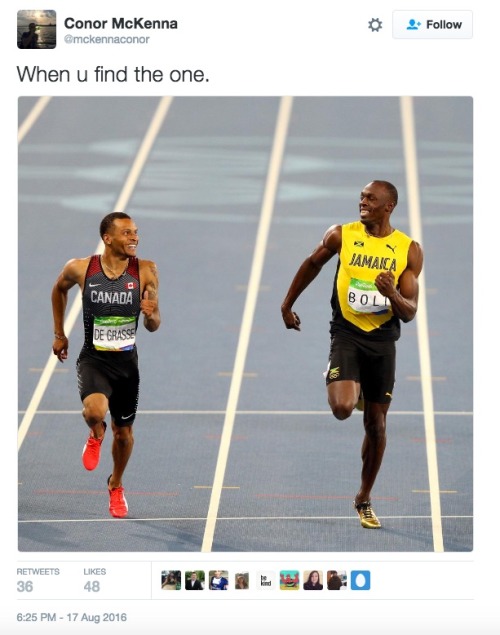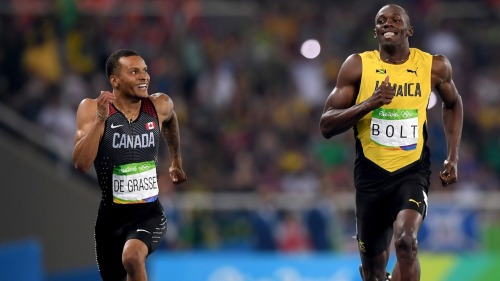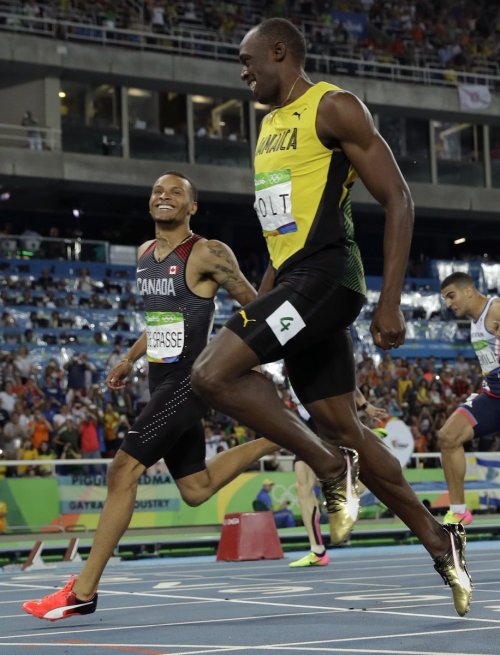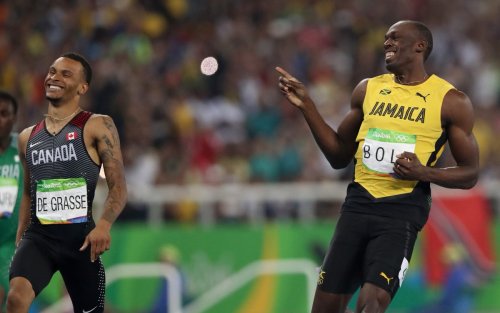Smparticle2 - Untitled




More Posts from Smparticle2 and Others
Spacewalk Recap Told in GIFs
Friday, Oct. 20, NASA astronauts Randy Bresnik and Joe Acaba ventured outside the International Space Station for a 6 hour and 49 minute spacewalk. Just like you make improvements to your home on Earth, astronauts living in space periodically go outside the space station to make updates on their orbiting home.
During this spacewalk, they did a lot! Here’s a recap of their day told in GIFs…
All spacewalks begin inside the space station. Astronauts Paolo Nespoli and Mark Vande Hei helped each spacewalker put on their suit, known as an Extravehicular Mobility Unit (EMU).

They then enter an airlock and regulate the pressure so that they can enter the vacuum of space safely. If they did not regulate the pressure safely, the astronauts could experience something referred to as “the bends” – similar to scuba divers.
Once the two astronauts exited the airlock and were outside the space station, they went to their respective work stations.

Bresnik replaced a failed fuse on the end of the Dextre robotic arm extension, which helps capture visiting vehicles.

During that time, Acaba set up a portable foot restraint to help him get in the right position to install a new camera.

While he was getting set up, he realized that there was unexpected wearing on one of his safety tethers. Astronauts have multiple safety mechanisms for spacewalking, including a “jet pack” on their spacesuit. That way, in the unlikely instance they become untethered from the station, the are able to propel back to safety.

Bresnik was a great teammate and brought Acaba a spare safety tether to use.

Once Acaba secured himself in the foot restraint that was attached to the end of the station’s robotic arm, he was maneuvered into place to install a new HD camera. Who was moving the arm? Astronauts inside the station were carefully moving it into place!
And, ta da! Below you can see one of the first views from the new enhanced HD camera…(sorry, not a GIF).

After Acaba installed the new HD camera, he repaired the camera system on the end of the robotic arm’s hand. This ensures that the hand can see the vehicles that it’s capturing.

Bresnik, completed all of his planned tasks and moved on to a few “get ahead” tasks. He first started removing extra thermal insulation straps around some spare pumps. This will allow easier access to these spare parts if and when they’re needed in the future.

He then worked to install a new handle on the outside of space station. That’s a space drill in the above GIF.

After Acaba finished working on the robotic arm’s camera, he began greasing bearings on the new latching end effector (the arm’s “hand”), which was just installed on Oct. 5.

The duo completed all planned spacewalk tasks, cleaned up their work stations and headed back to the station’s airlock.

Once safely inside the airlock and pressure was restored to the proper levels, the duo was greeted by the crew onboard.

They took images of their spacesuits to document any possible tears, rips or stains, and took them off.

Coverage ended at 2:36 p.m. EDT after 6 hours and 49 minutes. We hope the pair was able to grab some dinner and take a break!
You can watch the entire spacewalk HERE, or follow @Space_Station on Twitter and Instagram for regular updates on the orbiting laboratory.
Make sure to follow us on Tumblr for your regular dose of space: http://nasa.tumblr.com.
You must stay drunk on writing so reality cannot destroy you.
Ray Bradbury, Zen in the Art of Writing (via books-n-quotes)

“I want to empower women through dance. I think you can build confidence through movement. When a woman starts moving her body, and becomes comfortable with herself, and realizes that she can do the steps — it connects back to life. Because all of life is movement. Technically we’re dancing every day. And it doesn’t matter how you look. It matters how you move.”


“Before a scene, she would be muttering deprecations under her breath and making small moans. According to Vivien, the situation was stupid, the dialogue was silly, nobody could possibly believe the whole scene. And then…she would walk into the scene and do such a magnificent job that everybody on the set would be cheering.” -David O. Selznick




From the TV series “The life of Mammals”.
(The Telegraph)

To keep pain in check, count down
Diverse cognitive strategies affect our perception of pain. Studies by LMU neuroscientist Enrico Schulz and colleagues have linked the phenomenon to the coordinated activity of neural circuits located in different brain areas.
Is the heat still bearable, or should I take my hand off the hotplate? Before the brain can react appropriately to pain, it must evaluate and integrate sensory, cognitive and emotional factors that modulate the perception and processing of the sensation itself. This task requires the exchange of information between different regions of the brain. New studies have confirmed that there is a link between the subjective experience of pain and the relative levels of neural activity in functional structures in various sectors of the brain. However, these investigations have been carried out primarily in contexts in which the perception of pain was intensified either by emotional factors or by consciously focusing attention on the painful stimulus. Now, LMU neuroscientist Enrico Schulz, in collaboration with colleagues at the University of Oxford, has asked how cognitive strategies that affect one’s subjective perception of pain influence the patterns of neural activity in the brain.
In the study, 20 experimental subjects were exposed to a painful cold stimulus. They were asked to adopt one of three approaches to attenuating the pain: (a) counting down from 1000 in steps of 7, (b) thinking of something pleasant or beautiful, and (c) persuading themselves – by means of autosuggestion – that the stimulus was not really that bad. During the experimental sessions, the subjects were hooked up to a 7T magnetic resonance imaging (MRI) scanner to visualise the patterns of neural activity in the brain, which were later analysed in detail.
In order to assess the efficacy of the different coping strategies, participants were also asked to evaluate the subjective intensity of the pain on a scale of 0 to 100. The results revealed that the countdown strategy was the most effective of the three methods. “This task obviously requires such a high level of concentration that it distracts the subject’s attention significantly from the sensation of pain. In fact some of our subjects managed to reduce the perceived intensity of pain by 50%,” says Schulz. “One participant later reported that she had successfully adopted the strategy during the most painful phase of childbirth.”
In a previous paper published in the journal Cortex in 2019, the same team had already shown that all three strategies help to attenuate the perception of pain, and that each strategy evoked a different pattern of neural activity. In the new study, Schulz and his collaborators carried out a more detailed analysis of the MRI scans, for which they divided the brain into 360 regions. “Our aim was to determine which areas in the brain must work together in order to successfully reduce the perceived intensity of the pain,” Schulz explains. “Interestingly, no single region or network that is activated by all three strategies could be identified. Instead, under each experimental condition, neural circuits in different brain regions act in concert to varying extents.”
The attenuation of pain is clearly a highly complex process, which requires a cooperative response that involves many regions distributed throughout the brain. Analysis of the response to the countdown technique revealed close coordination between different parts of the insular cortex, among other patterns. The imaginal distraction method, i.e. calling something picturesque or otherwise pleasing to mind, works only when it evokes intensive flows of information between the frontal lobes. Since these structures are known to be important control centres in the brain, the authors believe that engagement of the imaginative faculty may require a greater degree of control, because the brain needs to search through more ‘compartments’ – to find the right memory traces, for instance. Comparatively speaking, counting backwards stepwise – even in such awkward steps – is likely to be a more highly constrained task. “To cope with pain, the brain makes use of a recipe that also works well in other contexts,” says Anne Stankewitz, a co-author of the new paper: “success depends on effective teamwork.” Her team now plans to test whether their latest results can be usefully applied to patients with chronic pain.










Theatre time. All dancer have their own ways of getting ready for a show. I believe that a consistent routine is important to preparing for what’s ahead in a few hours. Because Forsythe’s “Artifact” is so hard on the body and I’m in every show, I tend to get to the theatre pretty early to make sure everything is ready, to put on some “normatec” boots (a compression boot for athletes that helps greatly with fatigue) and do hair and makeup. - Lia Cirio
Lia Cirio - Boston Opera House
Follow the Ballerina Project on Facebook, Instagram, YouTube, Twitter & Pinterest
For information on purchasing Ballerina Project limited edition prints.









-
 anotheramr liked this · 6 months ago
anotheramr liked this · 6 months ago -
 anna806fq liked this · 6 months ago
anna806fq liked this · 6 months ago -
 glitchven liked this · 8 months ago
glitchven liked this · 8 months ago -
 joeys-pizza liked this · 9 months ago
joeys-pizza liked this · 9 months ago -
 botanicallyinclinednerd liked this · 9 months ago
botanicallyinclinednerd liked this · 9 months ago -
 alanangels liked this · 9 months ago
alanangels liked this · 9 months ago -
 arebornthought liked this · 9 months ago
arebornthought liked this · 9 months ago -
 lvsh-bxtch liked this · 11 months ago
lvsh-bxtch liked this · 11 months ago -
 lawhan1312 liked this · 1 year ago
lawhan1312 liked this · 1 year ago -
 thekirbiwithagun reblogged this · 1 year ago
thekirbiwithagun reblogged this · 1 year ago -
 jellyjalea liked this · 1 year ago
jellyjalea liked this · 1 year ago -
 checolitro liked this · 1 year ago
checolitro liked this · 1 year ago -
 creativemercinary liked this · 1 year ago
creativemercinary liked this · 1 year ago -
 ronesxanddustzer liked this · 1 year ago
ronesxanddustzer liked this · 1 year ago -
 barmisingute liked this · 1 year ago
barmisingute liked this · 1 year ago -
 christchristoph-ohmy liked this · 1 year ago
christchristoph-ohmy liked this · 1 year ago -
 iamdefinitelynotanalien liked this · 1 year ago
iamdefinitelynotanalien liked this · 1 year ago -
 tae-kwon-doit reblogged this · 1 year ago
tae-kwon-doit reblogged this · 1 year ago -
 rebel13lion39 reblogged this · 1 year ago
rebel13lion39 reblogged this · 1 year ago -
 sigh-the-kraken reblogged this · 1 year ago
sigh-the-kraken reblogged this · 1 year ago -
 rubysevens liked this · 2 years ago
rubysevens liked this · 2 years ago -
 bakedspoonie liked this · 2 years ago
bakedspoonie liked this · 2 years ago -
 doeeyeddyke liked this · 2 years ago
doeeyeddyke liked this · 2 years ago -
 bemybabymp3 liked this · 2 years ago
bemybabymp3 liked this · 2 years ago
